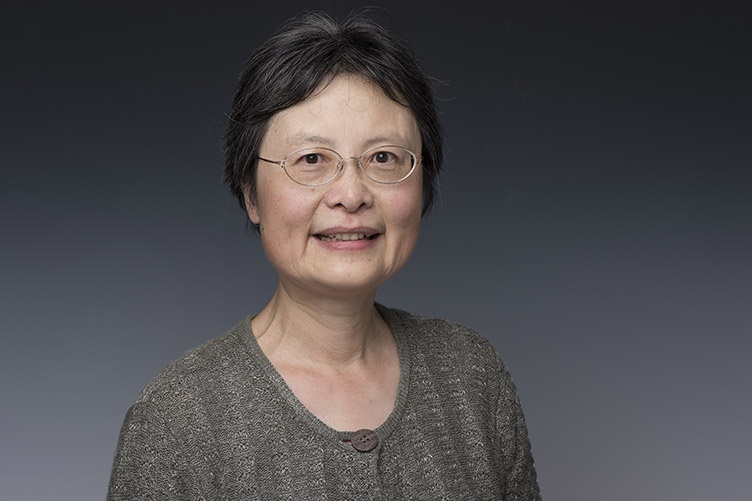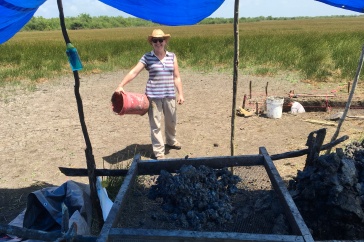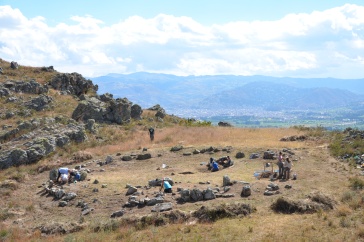
Lu Yan, associate professor of history at UNH
UNH historian Lu Yan is a native of Shanghai and specializes in modern Chinese history. She is fortunate that her research interests have taken her to her native country frequently over the years. After one such visit, Lu Yan had completed a series of articles and a book about Chinese and Japanese relations in the first half of the 20th century, when, among the source material she had collected, she discovered a thick file whose contents opened a completely new line of inquiry.
The file contained reports by British labor officers from the 1940s and 1950s, now archived in the Public Records Office in Hong Kong. The topic: their day-to-day contacts with Chinese workers and union activists in Hong Kong.
“Without exception,” marvels Lu Yan, “the reports emphasized the political character of the Chinese labor unions and their close connection to the mainland.”
Lu Yan decided to dig deeper, visiting Hong Kong every summer and then archives in London, Oxford and Taipei. Her findings became the basis for a book that undertakes, for the first time, to connect two often studied, but heretofore unconnected, strands in history.
Her new book, aptly named “Crossed Paths,” chronicles the entwined courses of Chinese labor activism and British imperial reform from the 1930s to the 1950s. Her narrative is set against the tumultuous period in which Asia was shaken by Japanese invasion, the Pacific War and colonial recovery of British Asia. At the same time, China’s struggle for independence was entangled in the political conflict between the Guomindang-led government and the Chinese Communist Party in a civil war.
“The Japanese invasion of Manchuria in 1931 and subsequent occupation of that region were galvanizing forces for a new kind of civic activism across China,” Lu Yan explains. Springing up on factory floors and in neighborhoods, activist organizations were economically diverse — workers, students and professionals made up most of them. Even millionaires in Hong Kong took part in fundraising to support China’s resistance. All put aside local differences of dialect and custom to fight for their common cause against Japanese invasion.
“Chinese workers in Hong Kong launched wave after wave of activism, not just in industrial disputes in the 1940s and 1950s, but also in armed resistance against Japanese invasion and in clandestine operations supporting the Allies in the China theater of WWII,” says Lu Yan.
The second line of development, imperial reform, originated in London as the British empire sought to intervene in labor affairs where unrest threatened political stability. This included parts of Africa and the West Indies, but also Hong Kong. “By the late 1930s, with war around the corner, Great Britain wanted its colonial manufacturing concerns to be running smoothly,” says Lu Yan. “London began interventionism in labor affairs by setting up labor departments across the British empire.”
If you want to understand what it meant to be Chinese and living in Hong Kong for the past 150 years, you have to consider the double mindset of being Chinese and being colonized.
In Hong Kong and throughout the empire, the most significant change London made was granting legal status to labor unions, which, prior to this time, had been outlawed in many colonies. Lu Yan says the change helped create “real progress” as the colonial government mediated between industrial owners and workers during a period when Hong Kong was moving from a trade to industrial center.
In what became a golden age of labor activism reform in Hong Kong, reform also produced another, unintended, consequence. “Instead of making colonial labor productive for the empire during wartime,” says Lu Yan, “reform emboldened workers to merge their struggle for better socio-economic treatment with their deeply held identity with China.”
By 1949, national independence would come to mean communist victory under Mao Zedong and the self-exile of the defeated nationalists to Taiwan. The glory years of Chinese labor activism in Hong Kong soon ended as well, as did open borders between the British colony and the mainland. By 1950, China and Hong Kong became two separate worlds that the Cold War would keep frozen in place for nearly half a century.
It might appear ironic, then, that by 2019, the largely student-led protests in Hong Kong would feature colonial flags and pleas to President Donald Trump to “free” Hong Kong from China, to which Hong Kong was returned by the British in 1997.
Lu Yan takes the long view: “If you want to understand what it meant to be Chinese and living in Hong Kong for the past 150 years, you have to consider the double mindset of being Chinese and being colonized,” she says. “That legacy still confronts Hong Kong today as this world city within the vast South China tries to adjust to the rapidly developing and more open China.”
-
Written By:
Dave Moore | Freelance Writer




















































